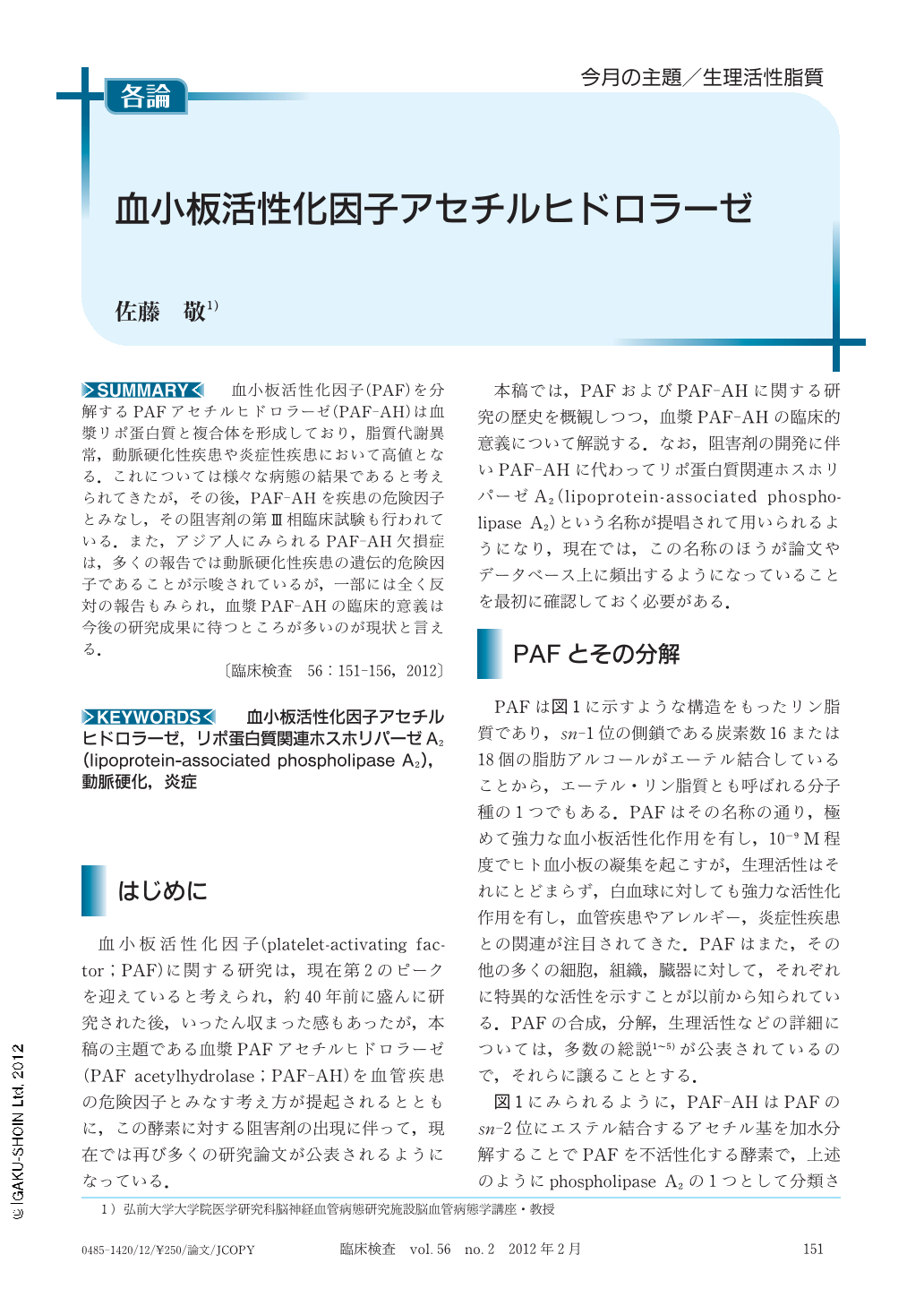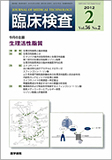Japanese
English
- 有料閲覧
- Abstract 文献概要
- 1ページ目 Look Inside
- 参考文献 Reference
血小板活性化因子(PAF)を分解するPAFアセチルヒドロラーゼ(PAF-AH)は血漿リポ蛋白質と複合体を形成しており,脂質代謝異常,動脈硬化性疾患や炎症性疾患において高値となる.これについては様々な病態の結果であると考えられてきたが,その後,PAF-AHを疾患の危険因子とみなし,その阻害剤の第III相臨床試験も行われている.また,アジア人にみられるPAF-AH欠損症は,多くの報告では動脈硬化性疾患の遺伝的危険因子であることが示唆されているが,一部には全く反対の報告もみられ,血漿PAF-AHの臨床的意義は今後の研究成果に待つところが多いのが現状と言える.
Platelet-activating factor acetylhydrolase (PAF-AH) inactivates PAF by the removal of its sn-2 acetyl group, and the enzyme in plasma is bound to lipoproteins. Plasma PAF-AH activity is enhanced in various conditions including disorders of lipid metabolism, atherosclerotic diseases, and inflammatory diseases, which has been considered as an adaptation to these abnormalities. Recently, however, increased plasma PAF-AH is also regarded as a risk for coronary heart disease ; and an enzyme inhibitor is under evaluation for its effectiveness in the disease prevention in an ongoing phase Ⅲ clinical trial. Plasma PAF-AH deficiency, found in Asian populations but not in Caucasians, has been suggested to serve as a genetic risk factor for these diseases, but one recent study suggests the deficiency might be protective for the occurrence of ischemic heart disease. Thus the clinical implications of plasma PAF-AH activity are still controversial and may be unraveled by future studies.

Copyright © 2012, Igaku-Shoin Ltd. All rights reserved.


